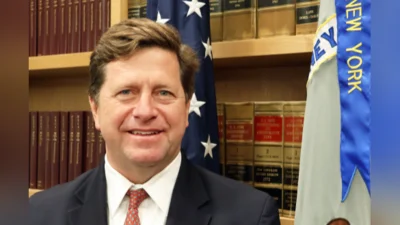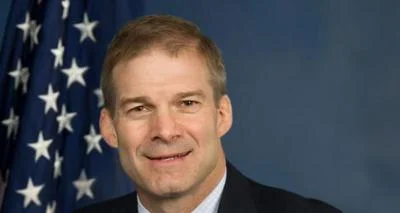The Congressional Record is a unique source of public documentation. It started in 1873, documenting nearly all the major and minor policies being discussed and debated.
“THE EMPLOYEE COMMUTE OPTION” mentioning the U.S. Dept. of Transportation was published in the House of Representatives section on pages H3124-H3125 on March 14, 1995.
The publication is reproduced in full below:
THE EMPLOYEE COMMUTE OPTION
The SPEAKER pro tempore. Under a previous order of the House, the gentleman from Illinois [Mr. Manzullo] is recognized for 5 minutes.
Mr. MANZULLO. Mr. Speaker, the issue I want to speak about tonight involves a mandate imposed by Congress which must be enforced by the EPA. It is a plan that affects many of my constituents in the 16th congressional district of Illinois and many businesses in several cities across the country.
Many governors have called this the most unreasonable, least thought-
out, least effective but very, very costly program ever proposed by the U.S. Congress. The plan, employer trip reduction, was mandated under the Clean Air Act amendments of 1990.
Let me explain what this mandate is all about. Section 182(d)(1)(B) of the Clean Air Act requires employers of 100 or more employees in severe and extreme ozone nonattainment areas to increase passenger occupancy per vehicle in commuting trips between home and the workplace during peak travel periods by not less than 25 percent. The idea is to have people find some other mode of transportation to and from work other than using their car.
The misnomer applied to this mandate is the Employee Commute Option. Some option. If the State elects not to implement this mandate, it stands to lose some of its transportation funds. In Illinois that is
$700 million. In Pennsylvania, it is $900 million. In some States, fines levied against businesses that do not participate may range into the thousands of dollars.
Areas across the country that face this mandate include Baltimore, New York, Philadelphia, Chicago, Houston, Milwaukee, Los Angeles, San Diego, Ventura County and Orange County in California. Other affected States include Connecticut, Delaware, New Jersey, and Indiana.
The EPA, in implementing guidelines for this Employee Commute Option, suggests other options for getting to work including mass transit, jogging, bicycle riding, car pooling, and walking.
Well, in the 16th congressional district of Illinois there is a rural county, McHenry County, which is included in the Chicago consolidated statistical metropolitan area. That means residents in and around McHenry County who work in this rural area without sidewalks or mass transit system must car pool. This is a federally mandated car pooling and it is an outrage.
When the amendments of the Clean Air Act were passed in 1990, I was not a Member of this body, and to the best of my knowledge there was never any formal debate on this issue in the House; never any specific hearings on the issue before it was simply slipped in to the Clean Air Act amendments.
This past Sunday, Illinois Governor Edgar and I took the bold and courageous step of announcing a moratorium on the federally mandated employee commute option. He has directed the Illinois Department of Transportation not to enforce this measure. Why? An assistant administrator for the EPA admitted that air emissions reductions are, quote, ``minuscule,'' and her agency has stated it simply does not intend to enforce the mandate.
This moratorium now puts Illinois in the same situation as Pennsylvania and Texas which have announced that they will not participate in enforcing the mandate. There is only one catch, Mr. Speaker: the employee trip reduction mandate is the law. The EPA may choose to not enforce it. The States may not enforce it. However, there is nothing to keep a Federal judge from enforcing it.
No, the mandate is clear. It is law. It says that businesses with over 100 employees shall participate and decrease
[[Page H3125]] the number of cars going to and from work. This will cost up to $210 million per year to enforce this unfunded mandate and that applies not only to the private business business but to the public sector.
This law is so ridiculous that it says to a high school that has more than 100 teachers and administrators, that those teachers have to car pool. But the students do not have to car pool, so we would have the incredible result of teachers walking to work, having to hitchhike there to be picked up by their students. And students would rather go to school without their teachers so that they will not have to be taught the subject for the first hour. It is crazy. It is insane. But that is how ridiculous this mandate is.
Data from Southern California indicates that forced car pooling costs companies over $100 per employee and $3,000 per vehicle taken off the road. And the EPA itself has estimated the tremendous cost into the billions of dollars annually to address a solution which itself calls minuscule.
{time} 1900
I have introduced H.R. 325 to return the true meaning to the word
``option.'' It makes the employer trip reduction mandate optional to the affected states. H.R. 325 is dedicated solely to correcting this single provision in the Clean Air Act. Nothing else. It does not decrease the quality of the air. This bill simply makes car pooling an option to reach the goal of clean air. This is not an environmental or anti-environmental bill. It simply makes car pooling voluntary in the menu of options available to achieve clean air standards.
This is why this bill has such wide support. It is bipartisan, has more than 152 cosponsors, and I would encourage my colleagues to become cosponsors with us.
____________________








